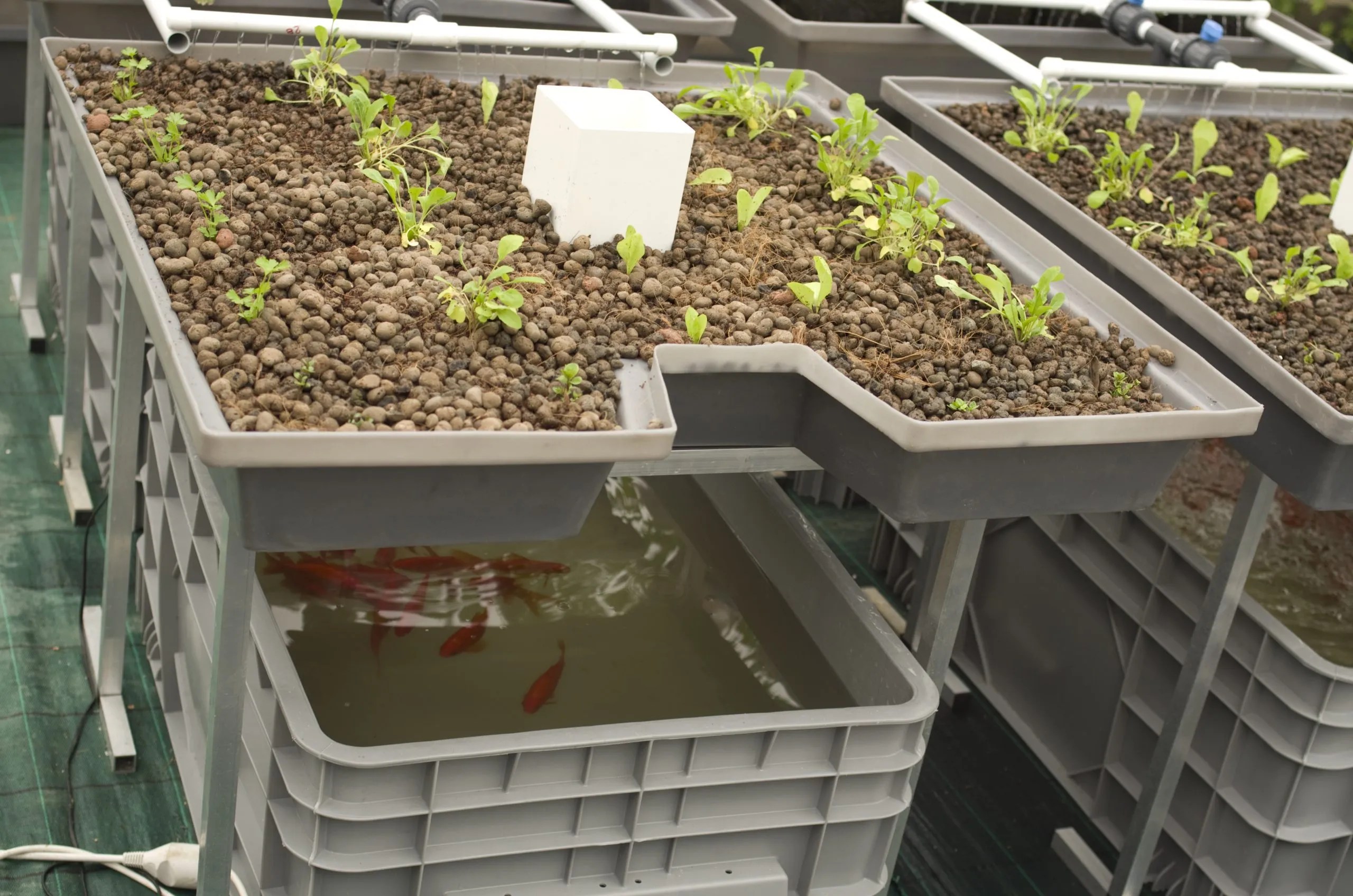/GettyImages-142873284-7afec7706c2a4997841bde2792c7ff6b.jpg) www.treehugger.com
www.treehugger.com Introduction: What is Aquaponics? Aquaponics is a symbiotic system that combines aquaculture (raising aquatic animals) with hydroponics (growing plants without soil). Fish waste provides nutrients for the plants, and the plants filter the water for the fish, creating a closed-loop ecosystem. This DIY guide will show you how to build a simple and effective aquaponics system at home.
Materials You'll Need: A fish tank (at least 20 gallons) A grow bed (should be the same surface area as the fish tank) A water pump (rated for the size of your tank and grow bed height) Grow media (clay pebbles, lava rock, or gravel) PVC pipes and fittings (for plumbing the system) Air pump and air stone (for oxygenating the fish tank) Fish (Tilapia, goldfish, or koi are good options for beginners) Plant seedlings or seeds Water testing kit (pH, ammonia, nitrite, nitrate) Optional: Timer for the water pump
Step 1: Setting Up the Fish Tank First, thoroughly clean your fish tank with water only. Avoid using soap or detergents, as they can be harmful to the fish. Place the tank in a location that receives indirect sunlight. Direct sunlight can cause algae blooms and overheat the water. Fill the tank with dechlorinated water. You can use a dechlorinating solution available at most pet stores. Install the air pump and air stone to provide oxygen for the fish.
Step 2: Building the Grow Bed The grow bed should be placed above the fish tank. You can use a plastic tub, a repurposed container, or build one from wood lined with a pond liner. Ensure the grow bed is sturdy and can support the weight of the grow media and water. Drill holes in the bottom of the grow bed for drainage, but ensure the liner keeps the water inside.
Step 3: Plumbing the System Connect the water pump to the bottom of the fish tank using PVC pipes. Run the pipe up to the grow bed. The pump will push water from the fish tank into the grow bed. Install a return pipe from the grow bed back to the fish tank. This can be a simple gravity drain. You can either have the water constantly dripping into the grow bed and overflowing back to the tank, or using a siphon system that causes the water to drain completely periodically.
Step 4: Adding the Grow Media Rinse the grow media thoroughly to remove any dust or debris. Fill the grow bed with the rinsed grow media. The grow media provides a surface area for beneficial bacteria to colonize and helps support the plant roots.
Step 5: Cycling the System Before adding fish, you need to cycle the system to establish a beneficial bacteria colony. This process takes several weeks. Add a small amount of ammonia to the tank to start the nitrogen cycle. Test the water regularly for ammonia, nitrite, and nitrate. The ammonia and nitrite levels should eventually drop to zero, and the nitrate levels will rise. This indicates that the bacteria are converting the ammonia into less harmful substances.
Step 6: Adding Fish and Plants Once the system is cycled, you can add the fish. Start with a small number of fish and gradually increase the population as the system matures. Introduce plant seedlings or seeds into the grow bed. The plant roots will absorb the nutrients from the fish waste.
Step 7: Maintaining the System Monitor the water quality regularly, testing for pH, ammonia, nitrite, and nitrate. Adjust the pH as needed to keep it within the optimal range for both fish and plants (typically between 6.0 and 7.0). Add water to the tank as needed to compensate for evaporation. Clean the fish tank and grow bed periodically to remove any build-up of debris.
Conclusion: Enjoy Your Aquaponics Garden Building your own aquaponics system is a rewarding experience. You'll be able to grow your own fresh produce and raise fish sustainably. With proper maintenance, your aquaponics system can provide you with a continuous supply of food. Experiment with different types of fish and plants to find what works best for your setup.
Aquaponics-what Is Aquaponics And How Does It Work?
 agromoris.com
agromoris.com Component Of Aquaponics Systems
 www.aquaponicsforbeginners.com
www.aquaponicsforbeginners.com 20 Best Plants For Aquaponics
/GettyImages-142873284-7afec7706c2a4997841bde2792c7ff6b.jpg) www.treehugger.com
www.treehugger.com



0 komentar:
Posting Komentar